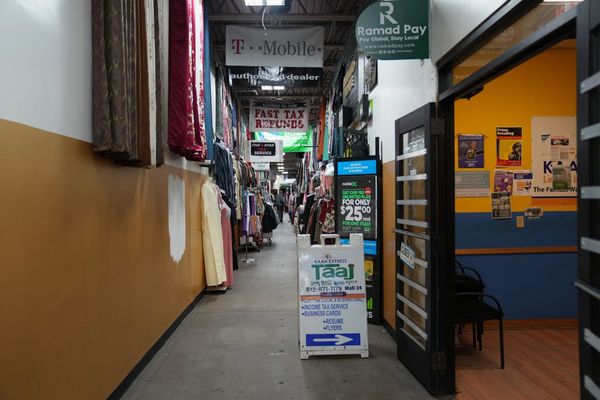
DOES the Hunter Valley have a strong link with St Mark's Basilica in Venice and the magnificent bronze horses there once stolen by Napoleon?
As implausible as it sounds, the answer appears to be yes.
How did this come about?
Well, here's a clue (sort of). It's a photograph of a humble Hamilton sign indicating Dumaresq Street, the tree-lined avenue marking the northern boundary of Newcastle Racecourse. It's actually named after Napoleonic war hero Lieutenant Colonel Henry Dumaresq (1792-1838), the second commissioner of the powerful Australian Agricultural Company from 1833.
The company had begun farming sheep on the northern shore of Port Stephens seven years earlier, then moved further north selecting a site better suited to sheep. Their head station up there later became the town of Tamworth.
The firm also started major coal mining in Newcastle, then decades later subdivided the land above its closed underground pits for residential development, often naming streets after its prominent company men. Hence, the Hamilton street sign.
But this story is really about a family connection with horses and Henry's younger brother, William John Dumaresq, also a Napoleonic war veteran. William started repatriating four metal horses back to Venice, in northern Italy, from atop a Paris war memorial and ironically ended up being a pioneer of horse breeding at Scone in the Upper Hunter.
Long eclipsed by the fame of Henry, his slightly older, more ambitious and temperamental brother, William, finally was publicly acknowledged.

Born in England with family links to Jersey, in Britain's Channel Islands, Henry and William Dumaresq both served in Canada and the Peninsula War in Spain against France's Napoleon Bonaparte. Henry was wounded at Waterloo in 1815, and the brothers arrived in Australia in 1825. They worked for the colonial government and settled on Upper Hunter estates. Henry had St Heliers, near Muswellbrook, and William, St Aubins, near Scone. But this summary doesn't tell anywhere near the full story.
After Napoleon was defeated in Waterloo in 1815, William was with allied troops in Paris when he received an unusual assignment in his role as a military engineer. Together with Samuel Augustus Perry, they were given the task of removing the four bronze horses installed atop the Arc de Triomphe du Carrousel in Paris and returning them "home" to Venice intact. The four 13 feet-tall "Horses of St Mark" had been looted from Venice by Napoleon in 1797. They had been Venetian icons for more than 500 years.
But the statues were already well-travelled, perhaps having been taken as war booty at least twice before. Precise details of their origin are sketchy as the metal equines may range in age from 800 to 2000 years. The works are often claimed to be an ancient Greek masterpiece from the sculptor Lysippos that came from the island of Chios.
Captain William Dumaresq is said to have been personally selected by the Emperor of Austria for the delicate rescue operation. Later, in recognition of the successful mission, he was rewarded with a gold snuff box with his initials in diamonds on the lid.
Some say the Venetian horses might have been made in the late Roman period and created for a triumphal arch and called a quadriga. In those days, horses were often depicted as pulling a chariot carrying a god or hero, or an emperor. They symbolised power and victory in Greco-Roman culture.
They may even have appeared on a triumphal arch to commemorate the victory over Byzantium (later Constantinople) in 195 CE by Roman emperor Septimius Severus. From there, the horses were brought to Venice after the Fourth Crusade when the city was sacked in 1204. The horses were installed on Venice's St Mark's facade.
The collars on the horses were thought to then have been added to cover the areas where their necks and heads were removed for easier transportation to Venice.
Interestingly, these original ancient 'four gilt' sculptures are thought not be made of bronze, but be at least 96 per cent copper. This would have made it easier, using mercury, to give them a golden coat.
After Dumaresq returned Napoleon's stolen horses to Venice and re-erected them, they stayed in pride of place outside St Mark's until air pollution fears in 1983. Authorities moved them inside the basilica for better protection.
Four replicas now adorn St Mark's loggia (facade). The only time the originals again travelled was when they were removed for safe keeping to Rome during World War II.
Today, visitors inside St Mark's are still impressed by the four classical treasures above them. The prancing horse statues seem enormous with ears erect and nostrils flaring.
Meanwhile, William Dumaresq (1793-1868) managed to outlive his brother Henry by 30 years and made his mark in Australia as an engineer, landowner and early politician, although most of us might be hard pressed to remember him now.
For even in death, the controversial Henry Dumaresq "the bravest of the brave" outshone William. Henry died early, aged 46, at Tahlee, at Port Stephens. A survivor of 13 battles in Spain, and lauded by poet Sir Walter Scott, he went to the grave, so it's said, with a bullet from Waterloo still in his lung.
Brother William is more quietly remembered for working on Canadian canals in wartime and later in peacetime acting briefly as NSW's colonial treasurer and also an acting deputy surveyor general.
While a public official, William sponsored a major improvement to Sydney's water supply, was a Sydney magistrate and later a politician. His name is also commemorated today in a foreshore park in Sydney's Rose Bay and seven other places around northern NSW, including Dumaresq Dam, a river, Mount Dumaresq and the former Dumaresq Shire.
One of the main streets of Scone is St Aubins Street, named after Dumaresq's estate. As well as managing his estate, William operated St Hiliers on behalf of his brother's widow. William also helped build St Luke's Church at Scone and gave land to build Scone Hospital.
And, of course, William helped pioneer horse breeding at Scone, a now flourishing industry.







